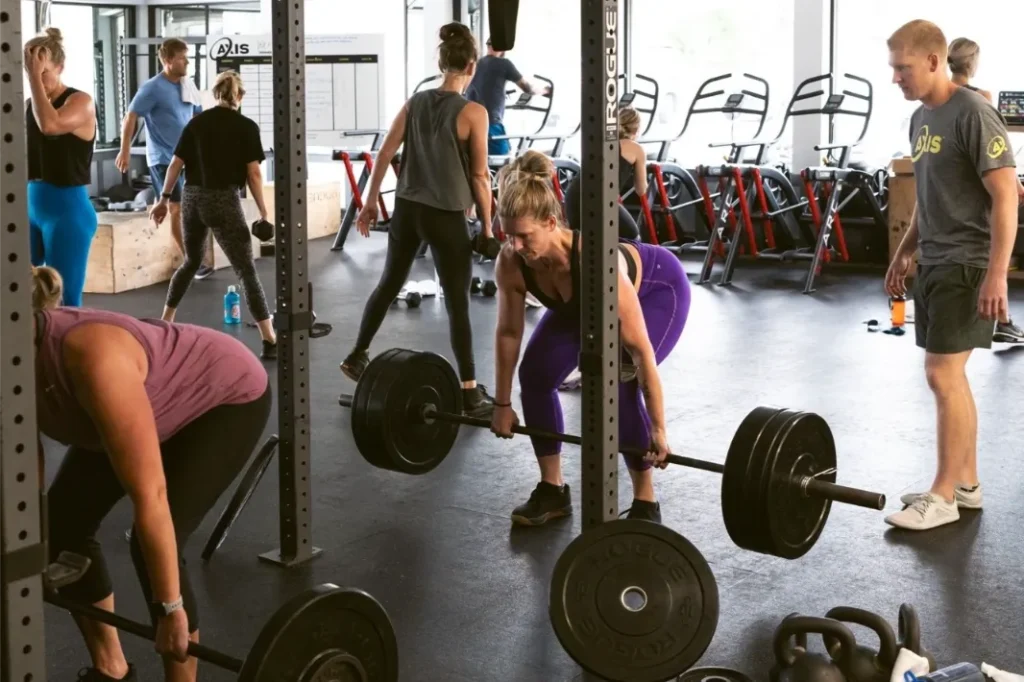Saunas have long been a sanctuary of relaxation and rejuvenation. In recent years, they’ve also become a popular post-workout ritual. But how effective are they really in enhancing workout recovery? Let’s dive into the myths, facts, and benefits of using a sauna after workout.
What is a sauna?
Saunas are small rooms or houses designed for experiencing dry or wet heat sessions. Saunas have evolved into various types around the world, each with its unique features but sharing the core principle of using heat for relaxation and health benefits. The three most common types of saunas are steam saunas, dry saunas, and infrared saunas.
Steam sauna (Traditional sauna)
- Heat source: A traditional steam sauna uses a heater filled with rocks over which water is poured to create steam.
- Temperature range: Typically, the temperature ranges between 150-195°F (65-90°C).
- Humidity level: High humidity due to steam, creating a moist heat environment.
- Experience: Steam saunas offer a robust and intense heat experience, causing the body to sweat profusely. This type of heat can be soothing for respiratory issues, as the moist air helps open airways.
Dry sauna
- Heat source: Like the traditional steam sauna, dry saunas use a heater with rocks but without the addition of water, thus no steam is produced.
- Temperature range: Dry saunas also operate at temperatures between 150-195°F (65-90°C).
- Humidity level: The humidity is significantly lower than in steam saunas, creating a drier heat environment.
- Experience: Dry saunas provide an intense heat sensation but without the moisture of steam saunas. This can be more comfortable for people who prefer a less humid environment.
Infrared sauna
- Heat source: Instead of heating the air, infrared saunas use infrared heaters to emit infrared light, which is absorbed directly by the skin.
- Temperature range: Generally lower than traditional saunas, typically around 110-135°F (43-57°C).
- Humidity level: Low humidity, similar to dry saunas.
- Experience: The heat from infrared saunas penetrates more deeply into the body, potentially providing more intense muscle relaxation and detoxification at lower air temperatures. This type of sauna is often considered more comfortable due to the lower air temperature, making it a good choice for those who may find traditional saunas too hot. It’s also favored for its potential to provide deeper muscle relaxation and improved circulation.
Each type of sauna offers unique benefits. The choice between them often depends on personal preference and the specific health benefits one is seeking. For instance, those looking for a more intense heat and sweat experience might prefer a traditional steam sauna, while someone interested in deeper muscle relaxation might opt for an infrared sauna. It’s always important to stay hydrated, listen to your body, and follow any safety precautions, regardless of the sauna type chosen.
Interested in the effectiveness of group fitness classes after the sauna?
Myths about saunas after workouts
Myth 1: Saunas burn a significant amount of fat
While it’s true that saunas can induce sweating, which results in temporary water weight loss, they are not a significant tool for fat loss.
Myth 2: Saunas are a replacement for a cool-down routine
Saunas should complement, not replace, a proper cool-down routine. Cooling down gradually is essential for muscle recovery and preventing injury.
Myth 3: More sweat means more detox
The primary role of sweating is to regulate body temperature, not to detoxify. While sweating does remove some toxins, the liver and kidneys are chiefly responsible for detoxification.
Facts about sauna use post-workout
Fact 1: Muscle relaxation and recovery
The heat from saunas can help relax muscles and alleviate soreness, aiding in recovery post-exercise.
Fact 2: Improved cardiovascular health
Regular sauna use has been linked to improved cardiovascular health, much like moderate exercise.
Fact 3: Stress reduction
Saunas can help reduce stress levels, providing a sense of mental relaxation which is crucial after intense physical activity.
Final thoughts
Saunas can be a valuable addition to your post-workout routine, offering benefits such as enhanced muscle recovery, improved circulation, and stress reduction. However, it’s important to approach sauna use with an understanding of its limitations and safety guidelines.
Now that you know the facts about sauna after workout, learn how it compares to steam room as a recovery method.
Want to add an Infrared sauna to your workout routine? Here at HiTone Fitness South Congaree, our members have unlimited access to the Infrared sauna. Claim your 3-day free pass here, and see for yourself what it can do for you.





